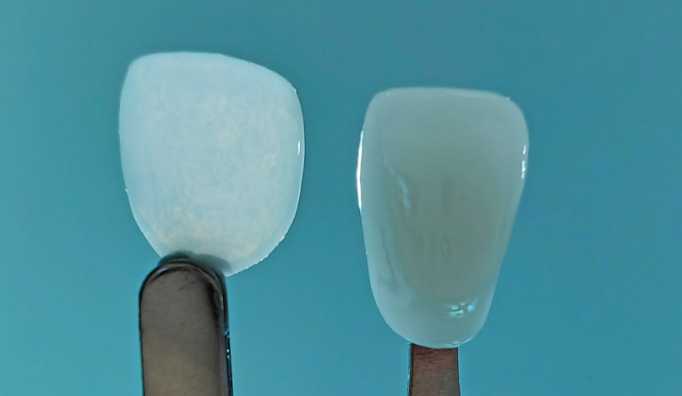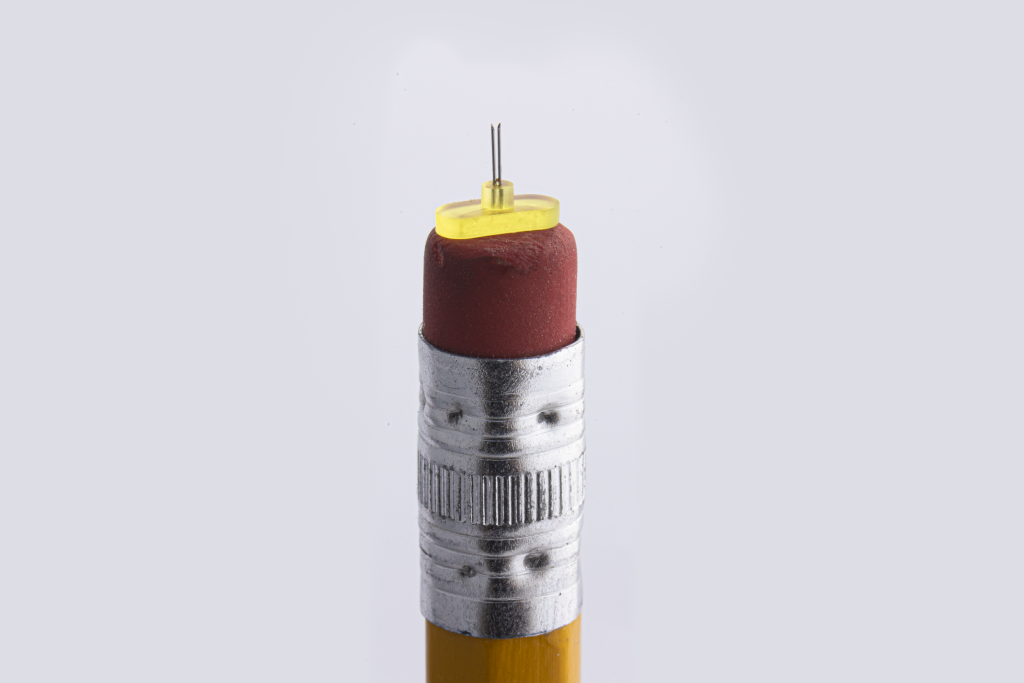Microscale 3D printer manufacturer Boston Micro Fabrication is making its debut in the dental sector by launching UltraThineer, the “world’s thinnest cosmetic dental veneer.” This news follows right after the company secured $24 million in series D funding to advance micro-scale additive manufacturing.
Utilizing projection micro stereolithography (PµSL), the recently introduced 3D printed veneers are tailored to be three times thinner than their conventional counterparts. This novel approach drastically reduces the preparatory steps required by dental practitioners. The UltraThineer veneers are anticipated to enter the U.S. market by spring 2024, contingent upon the evaluation by the U.S. Food and Drug Administration (FDA).
“The ability to print ceramics at minimal thickness will be revolutionary. Our current processes for producing minimal prep veneers can be labor-intensive when compared to milled, full-coverage crowns in zirconia. Conservative reduction of the patient’s enamel should be practiced whenever possible. I’m looking forward to the start of this new technology, allowing intricate, ultra-thin veneers to be printed. BMF’s advancements and innovation will continue to push the boundaries of dentistry and inspire innovation worldwide,” said Jessica Love from Capture Dental Arts, a leading US provider of cosmetic dental services.

UltraThineer veneers: the future of cosmetic dentistry?
According to BMF, the current practice involves crafting veneers that are about 0.5 mm thick or more. This necessitates extensive preparation of the patient’s existing teeth, resulting in an invasive and non-reversible process that can be uncomfortable. When it comes to aesthetic restoration, ultra-thin veneers take a different approach. These veneers, which are a mere 100 µm thick, require minimal tooth preparation, ensuring that a substantial amount of enamel is conserved. Dentists can now opt for ultra-thin zirconia veneers, which enable them to realign, reshape, or enhance teeth with a straightforward, painless, and minimally intrusive technique.
Professor Sun Yuchun from Peking University School of Stomatology highlighted that the rapid and painless enhancement and safeguarding of tooth surfaces are made possible by the advanced 3D printed zirconia veneer, renowned for its thinness and strength. This technology effectively prevents sensitivity to cold and acid, reduces wear, and brings about notable aesthetic improvements. Importantly, it stands out from traditional ceramic veneer techniques by eliminating the need for the entire tooth reduction process.
“Using our unique technology, companies across industries, from electronics to medical devices, are keeping pace with the increasing miniaturization of technology. In addition to continuing to partner with our customers on their own innovations, we’re excited to unveil one of the first self-developed applications of our technology,” said John Kawola, CEO-Global, BMF. “We know that patients and dentists alike can benefit from thinner veneers and are looking forward to bringing higher levels of precision to the cosmetic dental industry.”

Easing uncomfortable dental processes with 3D printing
Multinational printing firm HP‘s advanced Jet Fusion 5420W and Metal Jet S100 systems enhanced medical 3D printing. In the dental sector, Smile Direct Club, a US-based aligner manufacturer, employs 60 HP Jet Fusion 3D printers at their “Smile House” facility near Nashville. These 3D printers produce personalized molds for clear plastic aligners, offering a cost-effective alternative to traditional braces. With 80% of Americans potentially benefiting from orthodontic care, Smile Direct Club’s solution at $1,950 stands out against braces costing $5,000 to $8,000. Multi Jet Fusion (MJF) technology provides material efficiency, complemented by recycling efforts. Collaboration with HP and Ford has led to high-quality recycled plastic pellets, fueling injection molding, according to Smile Direct Club.
Leading 3D printing company Carbon introduced a production option for dental aligners, unveiled at the International Dental Show. The sustainable solution offers significant savings, boasting up to 65% increased throughput and reduced material usage per print, thus decreasing costs per part. Carbon Gen 2 aligner model includes proprietary software and high-performance resin, integrating with existing systems. The solution, including Carbon L1 3D printer, API-based software, and solventless spin-cleaning, automates hollowing, nesting, and batching. Tests show automated hollowing saves 40% resin per item, coupled with UMA 20 resin, achieving a 65% increase in component throughput.
What does the future of 3D printing for the next ten years hold?
What engineering challenges will need to be tackled in the additive manufacturing sector in the coming decade?
To stay up to date with the latest 3D printing news, don’t forget to subscribe to the 3D Printing Industry newsletter or follow us on Twitter, or like our page on Facebook.
While you’re here, why not subscribe to our Youtube channel? Featuring discussion, debriefs, video shorts, and webinar replays.
Are you looking for a job in the additive manufacturing industry? Visit 3D Printing Jobs for a selection of roles in the industry.
Featured image shows BMF develops ultra-thin veneers. Image via BMF.
Newer
Automotive groups see prototype verification speed increase 80-90% with INTAMSYS industrial 3D Printing
Older
Sub-micron 3D printer for semiconductor industry in development at In-Vision
Comments (0)
Dejar una respuesta
Debe de ingresar para publicar un comentario.
